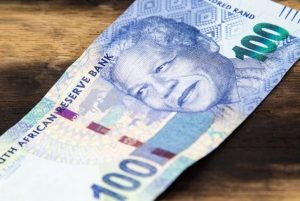US DOLLAR POSTS BIGGEST WEEKLY LOSS SINCE NOVEMBER 2023 ON TARIFF ANGST
The U.S. dollar slid on Friday and was set for its biggest weekly loss in over a year after President Donald Trump suggested a softer stance on tariffs against China, adding to uncertainty about the trade policy that kept equity markets on edge. Trump told Fox News on Thursday his recent conversation with President Xi Jinping was friendly and he thought he could reach a trade deal with China.”We have one very big power over China, and that’s tariffs, and they don’t want them, and I’d rather not have to use it, but it’s a tremendous power over China,” he said. The U.S. dollar dropped as much as 0.8% against a basket of currencies on Friday, before narrowing losses at the end of the day to be down 0.65%. But it still had its biggest weekly loss since November 2023, having lost 1.8% since Monday. Some analysts warned that the dollar could rise again if the U.S. tariff and interest rate policies shifted. “We think that the dollar has further to climb,” said Simon MacAdam, deputy chief global economist at Capital Economics. “Its appreciation so far has reflected both the strength of the economic data in the U.S. relative to peer economies and investors’ assessment of Trump’s policies, both of which have contributed to a shift in interest rate differentials that has been favourable to the dollar.”

STERLING JUMPS AS TARIFF DOUBTS WEIGH ON DOLLAR
The pound rallied against the dollar on Friday, on track to close the week higher after three weeks of losses, as a lack of concrete tariff policies during U.S. President Donald Trump’s first week in office pressured the greenback across the board. Sterling was up 0.6% against the dollar after touching its highest since Jan. 9 at $1.2344. Similar to other major currencies, the pound chased steep weekly gains against the greenback, and looked set to end the week 2.1% higher. Trump said in an interview published late on Thursday that he thought he could reach a trade deal with China and that he would rather not use tariffs against the country, while also calling them a “tremendous power”. Uncertainty surrounding Trump’s tariff policies have set the tone for currency markets this week, with investors broadly selling off the dollar. Trump’s latest remarks underscore that tariffs can be used as a negotiation tool, analysts said, signalling that some of the expected trade policies that markets had braced for might not materialise. “The threat of tariffs will be used to gain favourable terms for U.S. businesses, but eventually tariffs will not be as bad a feared,” said Mohit Kumar added that continuous headlines about tariffs would still spur market volatility. The euro was up about 0.1% against the pound at 84.39 pence on the day, but the currency pair had hardly moved on the week.

CANADIAN DOLLAR ADDS TO WEEKLY GAIN ON TARIFF SKEPTICISM
The Canadian dollar strengthened against its U.S. counterpart on Friday, adding to its weekly gain, as few new details on proposed U.S. tariffs led to broad-based declines for the American currency. The loonie was trading 0.2% higher at 1.4350 per U.S. dollar, or 69.69 U.S. cents, after moving in a range of 1.4316 to 1.4383. For the week, the currency gained 0.9%, as it recovered from a near five-year low at 1.4515, it hit on Tuesday. “The Canadian dollar is benefitting from broad USD weakness as investors remain skeptical of the degree and severity of tariff implementation in the absence of any new announcements,” said Jayati Bharadwaj, a global FX strategist at TD Securities. U.S. President Donald Trump has threatened to impose sweeping tariffs on trading partners, including a 25% tax on goods imported from Canada.The premier of Ontario, Canada’s most populous province, said he would call an early election, citing the need for a strong mandate to fight against tariffs. The price of oil, one of Canada’s major exports, settled slightly higher at $74.66 a barrel but was down for the week after Trump announced sweeping plans to boost domestic production while demanding that OPEC move to lower crude prices.
SOUTH AFRICAN RAND RALLIES AGAINST WEAKER DOLLAR, RATE DECISIONS IN FOCUS
South Africa’s rand strengthened against a weaker dollar on Friday after U.S. President Donald Trump demanded lower interest rates from the Federal Reserve, with eyes also on the South African Reserve Bank’s (SARB) rate decision next week. At 1406 GMT, the rand traded at 18.37 against the U.S. dollar, about 0.9% firmer than its previous close. The greenback last traded about 0.4% weaker against a basket of currencies. Data out of the world’s biggest economy on Thursday showed a rise in weekly jobless claims, while Trump, speaking virtually at the World Economic Forum meeting at Davos, said he would demand lower interest rates. The jobless claims and Trump’s remarks led to a revision of U.S. rate cut expectations and drove U.S. Treasury yields lower on Friday, ETM Analytics said in a research note. But analysts said that although dollar weakness supports the local currency, tariff risks posed by Trump and a fragile global sentiment could limit further gains. Domestically focused investors will look to the SARB’s first interest rate decision for 2025 on Thursday, in which economists polled by Reuters estimate a 25 basis point cut to 7.50%. “With the SARB, Fed and (European Central Bank) meetings ahead, central bank guidance will heavily influence (foreign exchange) and bond markets,” said Andre Cilliers, currency strategist at TreasuryONE.

DOLLAR EDGES UP AS TARIFF WORRIES RETURN, CENTRAL BANKS IN FOCUS
The U.S. dollar edged up versus the euro but dropped against the yen on Monday as concerns about U.S. tariffs returned and investors braced for a raft of central bank policy meetings and economic data later this week. Last week was the dollar’s weakest in more than a year on expectations that tariffs enacted by U.S. President Donald Trump will be lower than previously feared. But concerns have resurfaced as the U.S. and Colombia pulled back from the brink of a trade war. Monetary policy decisions later this week and inflation data on Friday suggest the focus may shift, at least temporarily, from tariff risks to interest rate differentials, some analysts say. No change in rates from the U.S. Federal Reserve and 25 basis points (bps) cuts from the European Central Bank, the Bank of Canada and Riksbank are priced in, but markets will closely watch any clues on the outlook. Adarsh Sinha, forex and rate strategist at BofA, said “the gap between the U.S. dollar index, holding just under 108, and the level implied by rate differentials, closer to 106, has remained steady in the days following the (Trump) Inauguration.” The dollar index, which measures the currency against six others, rose 0.1% to 107.58, still close to the one-month low it touched last week. The index has risen nearly 4% since the U.S. elections in early November.
- CAPITALDIGEST MARKET REVIEW , 03/11/2025November 3, 2025
- CAPITALDIGEST DAILY NEWS, 03/11/2025November 3, 2025
- CAPITALDIGEST MARKET REVIEW, 22/09/2025September 22, 2025
Enter your email address for receiving valuable newsletters.
- CAPITALDIGEST DAILY NEWS, 03/11/2025NNPCL WEIGHS OVERHAUL, REPURPOSING OPTIONS FOR REFINERIES The Nigerian National Petroleum Company Limited has said...November 3, 2025
- CAPITALDIGEST MARKET REVIEW, 22/09/2025STERLING RISES AGAINST DOLLAR ON FED-BOE POLICY DIVERGENCE Sterling gained against the dollar on Tuesday,...September 22, 2025
- CAPITALDIGEST DAILY NEWS, 22/09/2025OIL REFORMS DRIVE $18.2BN DEALS – FG Nigeria’s oil and gas sector is experiencing a...September 22, 2025












